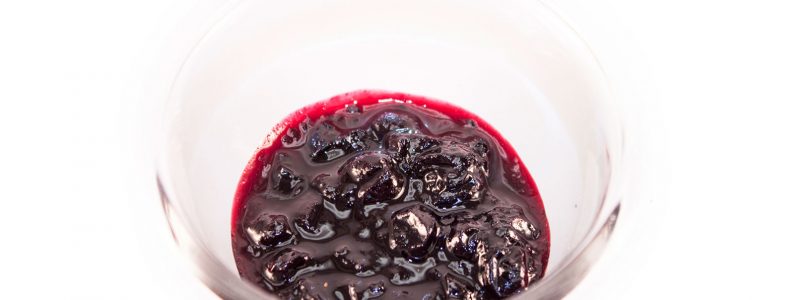The typical Abruzzo jam made with ripe grapes of the Montepulciano variety
We are in Autumn, moment of harvest and harvesting of olives, new wine and oil, precious products that will accompany us throughout the year. During the harvest period in Abruzzo, every year, a family ritual is repeated that tastes good and of home, the preparation of scrucchiata, the typical Abruzzo grape jam.
Essential ingredient of many traditional desserts of the region – uccelletti, sfogliatelle and calcionetti – scrucchiata or sclucchiata is never missing in the pantries of grandmothers and mothers also for the preparation of shortcrust pastry desserts such as tarts and bocconotti.
History of the scrucchiata
It is impossible to trace the historical origins of the product, probably prior to or concomitant with the creation of the Abruzzo sfogliatella in the early twentieth century. It is said, in fact, that when to Lama dei Peligni, Donna Anna, wife of Baron Tabassi, inherits the recipe for the Neapolitan sfogliatella from the Campania mother-in-law, she thought of re-adapting it in the dough and in the filling based on the availability of local ingredients, such as jam. grapes, cooked must and walnuts.
How is the scrucchiata
Dark purplish in color with a slight bitter aftertaste, scrucchiata is prepared only in this period of the year, strictly with well-ripened grapes of the Montepulciano variety and with a manual technique. The peculiarity of the slow and meticulous preparation derives from the cracking operation, that is the manual separation of the skins from the pulp.
The berries, in fact, must be removed from the stalk and squeezed, patiently, one by one, separating the pulp from the skin and seeds. Pulp and peel must be cooked together, strictly without adding sugar, until the compote congeals.
After washing the bunches of grapes, the berries are removed from the stalk and squeezed, patiently, one by one, dividing the pulp from the skin and seeds. Then using lu crivillucc or lu fur, an ancient sieve used precisely for the "purification" of grapes, consisting of a series of concentric circles supported by a wooden support, the residual seeds can be separated from the pulp, to create a more homogeneous compound.
Once this has been done, the pulp and peel must be cooked together, strictly without adding sugar, until the compote congeals.
Always stirring, the sauce is thickened over low heat until a viscous consistency is obtained. To know when it is ready, just put a little scrucchiaata on a saucer by tilting it. The compound must not slip, but remain compact.
The compote can also be kept for 2 years stored in sterilized glass jars and turned upside down to form the vacuum.
This recipe has already been read 793 times!
